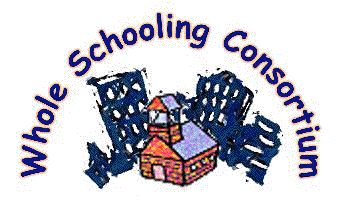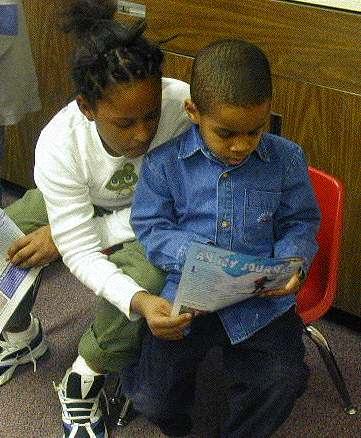

The purpose of schooling should not be a test score but to help children become active, effective citizens for democracy. This means that sharing of power and decision-making is an integral part of the culture of a school at all levels among staff, partnerships with parents and the community, and within classrooms. Links. Publications.

The outcome and process of good schooling and teaching.
It is well documented that in too many schools that serve low income children, a culture of staff anger towards both children and parents is too often pervasive. Low expectations, difficulties with behavior management, problems with parental connections all contribute to problems in learning and effective relationships between parents, children, and school staff. In such cultures, the tendency is to use approaches that attempt to highly regulate and control the behavior of students in the school (Koshewa, 1999). Examples: in such schools students are expected to sit quietly at their desks and work, raise their hands to make simple movements in the class, in elementary school, students are marched in regulated lines from class to class; in high schools, security guards check students coming into school and periodically make sweeps and searches of lockers looking for prohibited items. The result is that in these schools democratic processes where students and staff alike have a sense of input, control, choice in their daily routines is limited or virtually non-existent (Anyon, 1997; Martella, Nelson & Marchand-Martella, 2003). A cycle of control and challenge is born that reduces dramatically learning about responsibility and citizenship, increases anger and the need of students to challenge what they see as repressive authority, and sets in place emotions and tensions that reduce learning (Apple, 1995; Caine & Caine, 1991). Such schools tend to have higher referral rates for special education, as segregation and exclusion are added as a tool of control (Fierros & Conroy, 2002). In schools across socio-economic spectrums, however, the norm of segregated special education classes is to limit also opportunities for choice, control, and power in the classroom with similar outcomes as in low income schools. While the tone is one of beneficence and care, rather than repression, student initiative is often similarly impaired.
In the United States, the oft stated purpose of schools, imbedded in federal legislation and found in most mission statements of school systems, is to create thinking citizens who can make decisions and effectively engage in multiple adult roles – community leader, parent, worker. If this is so, research demonstrates clearly that classroom practice must systematically and explicitly provides students the opportunity to make choices, solve problems among a group, develop consensus, and deal with conflict. In such classrooms, students of great differences can all have an effective voice, students are motivated to learn as they develop a sense of ownership of a classroom community, and students are allowed and taught how to use power in their personal lives. Particularly for students with many life challenges who may have little control in their home lives, giving students power and control in the classroom can both prevent problematic behaviors and promote higher levels of learning (Apple, 1995; Oyler, 1996).
A school that seeks to prepare children to be citizens in a democracy must imbed the living and modeling of democracy. What is critical in this process are these three elements that must be at the foundation of the decision making process of the school.
Leadership. A whole school is first and foremost built on a vision of what is good for children. Staff care more about children than about their place and power in the school bureaucracy, their salary raise this coming year. These are important, of course. The needs of staff are critical. Yet, all is driven by a vision of what helps children.
Democracy. School leadership must be foremost in helping to impel a vision for children ahead. However, all school staff, parents, and children themselves must have a voice in creating an inclusive culture in a school if it is to survive.
Empowerment. Similarly, all in the school must be empowered to take action to make the vision of an inclusive school real. Power must not only be in the ‘office’ and principal, but all work towards this goal.
Michael Peterson, 2002
Allen, J. (Ed.). (1999). Class actions: Teaching for social justice in elementary and middle school. New York: Teacher's College Press.
Apple, M. (1995) Democratic schools. Alexandria, Virginia: Association for Supervision and Curriculum Development.
Bigelow, B., Christensen, L., Karp, S., Miner, B. & Peterson, B. (Eds.)(1994). Rethinking our classrooms: Teaching for equity and justice. Milwaukee, Wisconsin: Rethinking Schools.
Freire, P. (1995). Pedagogy of the oppressed. New Yorik: Continuum.
Goodlad, J. (1994). What are schools for? Phi Delta Kappa Educational Foundation.
Henkin. R. (1998). Who's invited to share: Using literacy to teach for equity and social justice. Portsmouth, NH: Heinemann.
Oyler, C. (1996). Making room for students: Sharing teacher authority in room 104. New York: Teacher's College Press.
Strachota, B. (1996). On their side: Helping children take charge of their learning. Greenfield, MA: Northeast Foundation for Children.
Wolk, S. (1998). A democratic classroom. Portsmouth, NH: Heinemann.